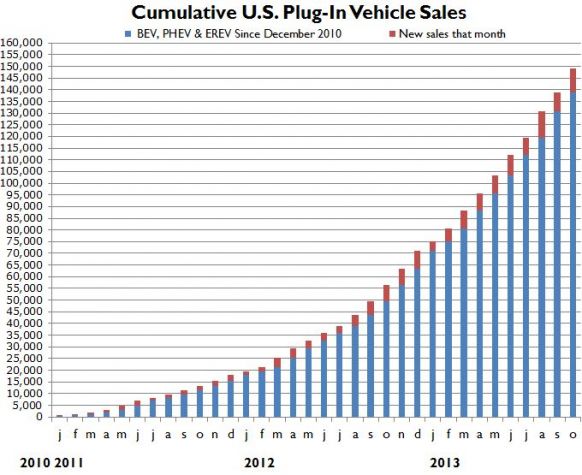Tesla had a decent quarter. But visibility for 2014 is limited, and the market is accustomed to Musk and Tesla strongly beating street estimates. That didn't happen this quarter, and the company got spanked, losing several billion dollars in market cap.
The electric car pioneer had Q3 revenues of $431.3 million, up an order of magnitude from last year's $50.1 million. R&D expenses dropped from $61.9 million to $56.4 million. GAAP net losses were $38.5 million, an improvement from last year's $110.8 million loss, but an increase over the $30.2 million loss reported in the second quarter. Revenues for the first nine months of 2013 was $1.4 billion, up from $107 million a year ago.
Tesla shipped a record 5,500 sedans, including 1,000 vehicles sent to Europe, with a total production rate of 550 cars per week. Barclays, an investment bank, had expected 5,820 units shipped, while consensus was 5,360 units. The company grew despite ZEV credit revenue falling to $10 million (from $51 million in Q2).
The firm looks to ship 6,000 vehicles in Q4 for a 2013 delivery total of 21,500 units. A lack of 2014 guidance has caused some concern amongst investors.
Here's the audio and the transcript from the call, and here are some notable quotes from Chairman Musk:
- Musk said that the EV builder will be "production-constrained," not demand-constrained in 2013 and 2014.
- We expect to track to 25 percent gross margin in the fourth quarter, excluding Zev credits.
- (W)e wanted to price the gen-three vehicle at around the $35,000 price point. When you consider the savings from gasoline...it is effectively like buying a gasoline car in U.S. for maybe $28,000 or a gasoline-engine car in Europe for maybe $22,000. That makes it pretty competitive.
- The thing that we are looking at doing in '14 is expanding Model S deliveries worldwide, particularly into Asia and then more broadly into Europe, as well as the other parts of the world. So it's kind of an international expansion and volume production expansion with Model S and then development to the Model X.
- (I)t is going to take us a while to build out the capacity for that third-generation vehicle, and we are going to sort out selling battery-pack capacity...because ultimately, when you produce 500,000 vehicles from a new plant, then [you] need self capacity that's commensurate with that, which is maybe bigger than all the lithium-ion production in the world today, or at least on par with it. (W)e have all the potential approvals from the Chinese regulatory authority to ship the car, and we expect to probably ship out our first cars in January, so they will be arriving in February, if things go according to plan. We will still be somewhat production-constrained.
- It doesn't make sense for us to expand the scope of our sales territories too. (...I)f we are production-constrained, it just amplifies the set of boundaries that we have to deal with. (B)ut we do want to get some cars to China in the first quarter and lay the groundwork in terms of service centers, superchargers, and so forth, for, hopefully, a significant growth in the rest of the year in China.
- So it's just the nature of the electrical grid that almost every country has their nuances, which you experience as a consumer when you've got this plethora of plugs. We experienced that same sort of thing with electric cars, and...Norway is our highest sales per capita [market], but one of the challenges there is that it has a floating grid...[and] a somewhat unique electrical system. So it takes a bit of an effort to make sure that [our vehicles] are able to charge properly in Norway.
Tesla stock is still up roughly 300 percent this year.
Chart from the Electric Drive Transportation Association





